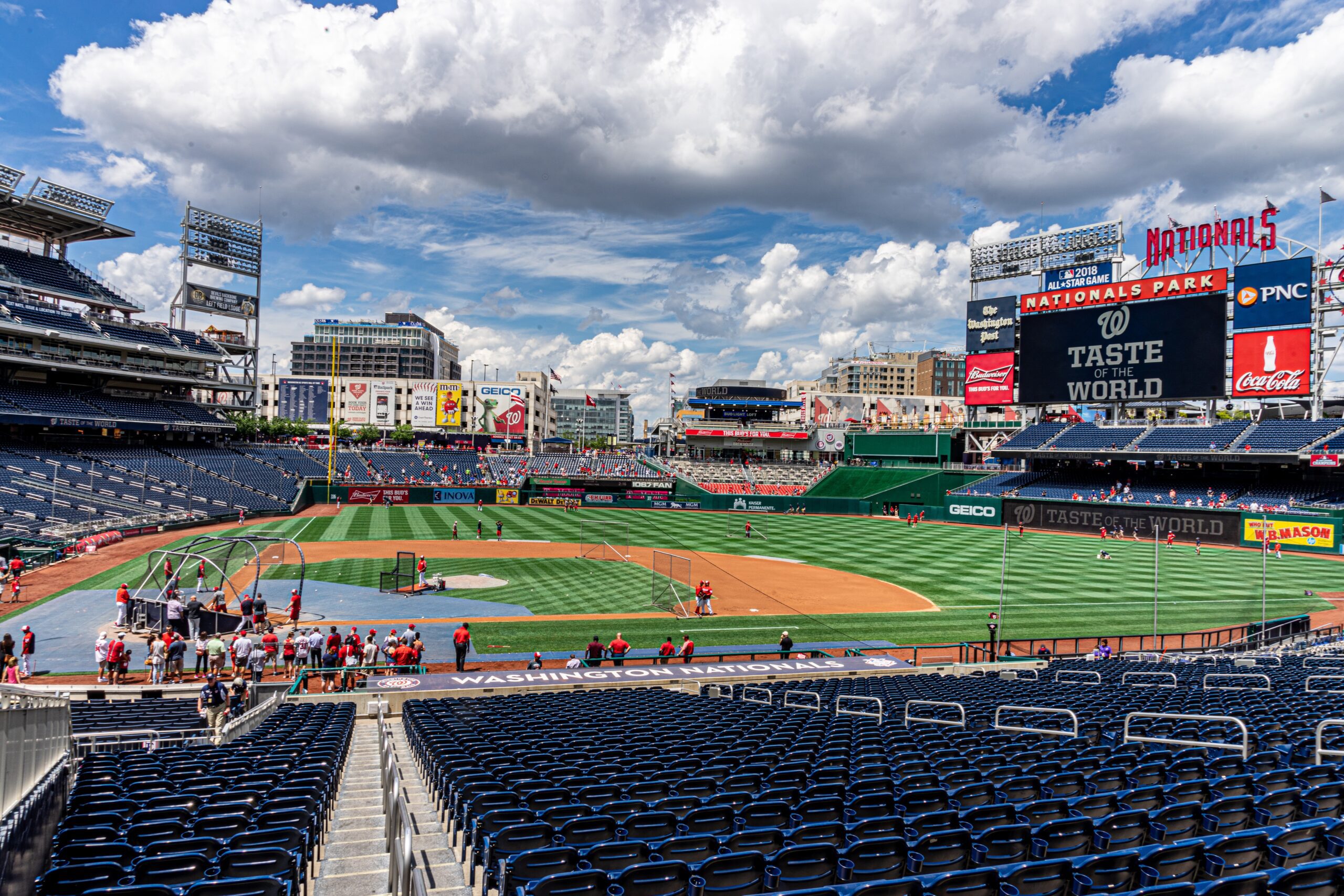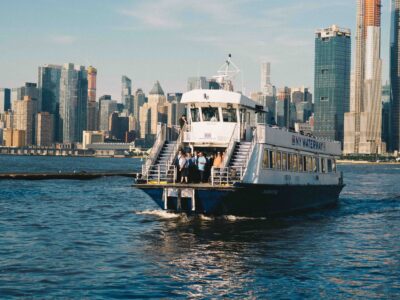While the Potomac ranks as Washington D.C.’s most famous river, the Anacostia River (long known as “The Forgotten River”) has seen its profile rise – and its long-neglected Navy Yard & Capitol Riverfront neighborhoods revitalized – since the Washington Nationals built its baseball stadium in that area.
Urban revitalization, sustainable design, and creating a world-class baseball stadium were core objectives in building Nationals Park. And all three goals were accomplished. Condé Nast Traveler has proclaimed it as “one of the finest baseball stadiums in America.” Nationals Park also helped revitalize the neighborhood economically by creating over 4,000 temporary construction jobs and nearly 400 permanent jobs in a location where there had been less than 200 jobs. An economic ripple effect has occurred since the stadium opened in 2008 too. The surrounding neighborhoods have “transformed from high crime to high rise” as it has experienced a boom in housing, hotel, office, and retail space.
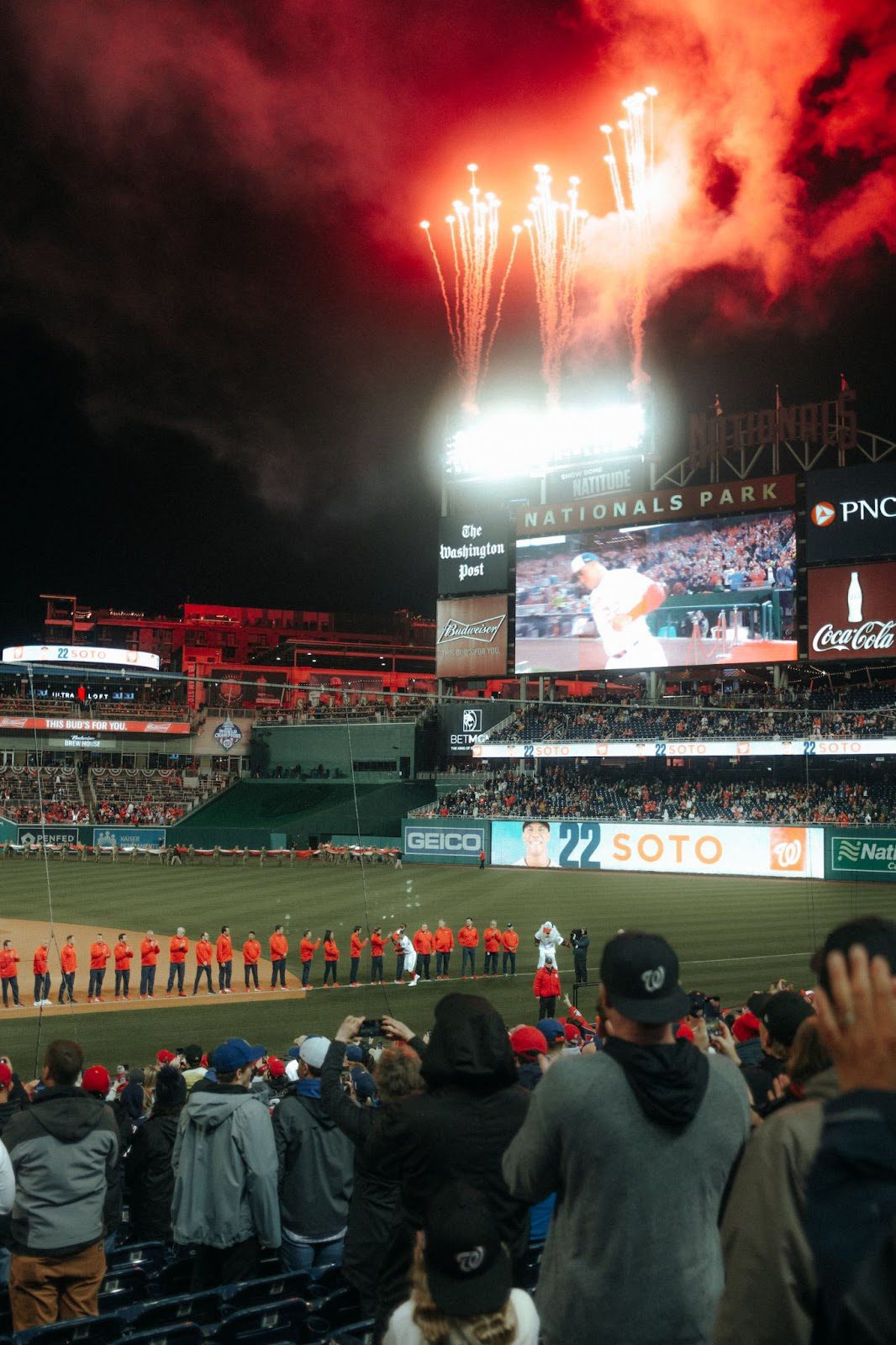
Nationals Park also represents the first major professional sports stadium in America honored with a Silver LEED (Leadership in Energy and Environmental Design) by the U.S. Green Building Council, which hailed the stadium as “one of the most ambitious projects to achieve certification.”
Its sustainability effort began with where the park stands: a brownfield that had contained a trash-transfer station, light-industrial businesses, and warehouses.
In the process of remediating this land, the Nationals participated in the Voluntary Cleanup Program, aimed to improve the environmental state of this approximately 25-acre site while creating the stadium.
Six thousand five hundred tons of construction waste were recycled as part of this environmental cleanup program. A third of the building’s materials were regionally sourced, cutting transportation-generated greenhouse gas emissions. Environmental pollution was limited by selecting carpet, adhesives, and paints with low VOC contents for the stadium’s interiors. Recycled materials are also utilized in 20% of the stadium construction, including 95% recycled steel.
Nationals Park took architectural clues from D.C.’s prominent civic buildings and a predominately steel and glass façade, which lends a sense of transparency and openness that complements its riverside location. Moreover, the park’s site is close to local bus routes and metro stations, and in fact, its main entrance leads conveniently to a metro station. The car parking areas were purposely limited to promote the use of alternative transportation. There is bicycle parking and bike valet service on game days.
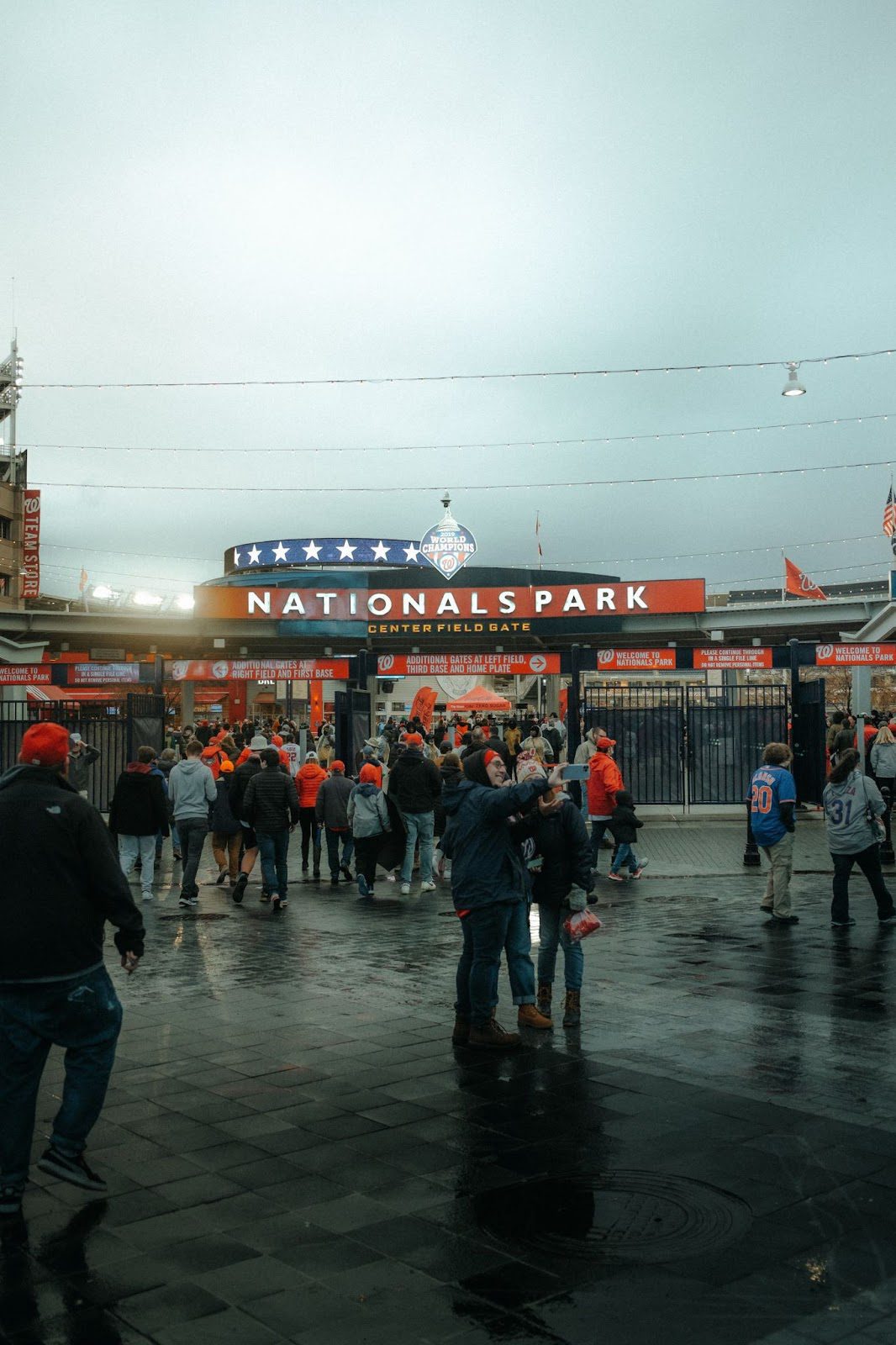
To protect the nearby Anacostia River, Nationals Park was built with a one-of-a-kind water filtration system that separates rainwater from the wash water and treats the two types of water before releasing them into the sanitary and stormwater systems. Screens trap solid material from both water sources leaving the seating areas, while sizable underground sand filters process stormwater before it gets pumped into the public storm-drain system. The baseball field also contains a sampling maintenance hole that regularly tests runoff quality.
Water waste at the stadium was also addressed by installing low-flow faucets and dual-flush toilets, which saves around 3.6 million gallons of water annually by cutting water consumption by a third. Going with air-cooled chillers rather than water-cooled ones reduced yearly water use by several million gallons.
The stadium’s energy conservation plan – including high-performance glazing, external shading, heat-recovery ventilation in the locker rooms, and energy-efficient light fixtures (such as LED lighting for the scoreboards) – lowered use by an estimated 15% while being less expensive.
In 2019, Nationals Park became one of ten major league teams to have solar power in their stadiums. Nearly 5,000 solar panels were installed on stadium parking garages to supply the Park with power. This 1.46 megawatt (MW) solar array represented the largest among MLB stadiums. By creating almost 1,900 megawatt-hours (MWh) of electricity annually, it satisfies 10% of the park’s energy demand while eliminating greenhouse gas emissions equal to removing over 275 vehicles off the road per year.
The solar roof wasn’t the park’s first environmental roof concept, and National Park was the first North American sports venue to have a green roof. Covering the concession area beyond left field, this 6,300-square-foot green roof features drought-resistant plants and materials that minimize heat absorption. The park also boasts a rooftop garden that produces three growing cycles of crops. Additionally, the Nationals teamed with CareFirst to plant and harvest food that will get donated to the local community.
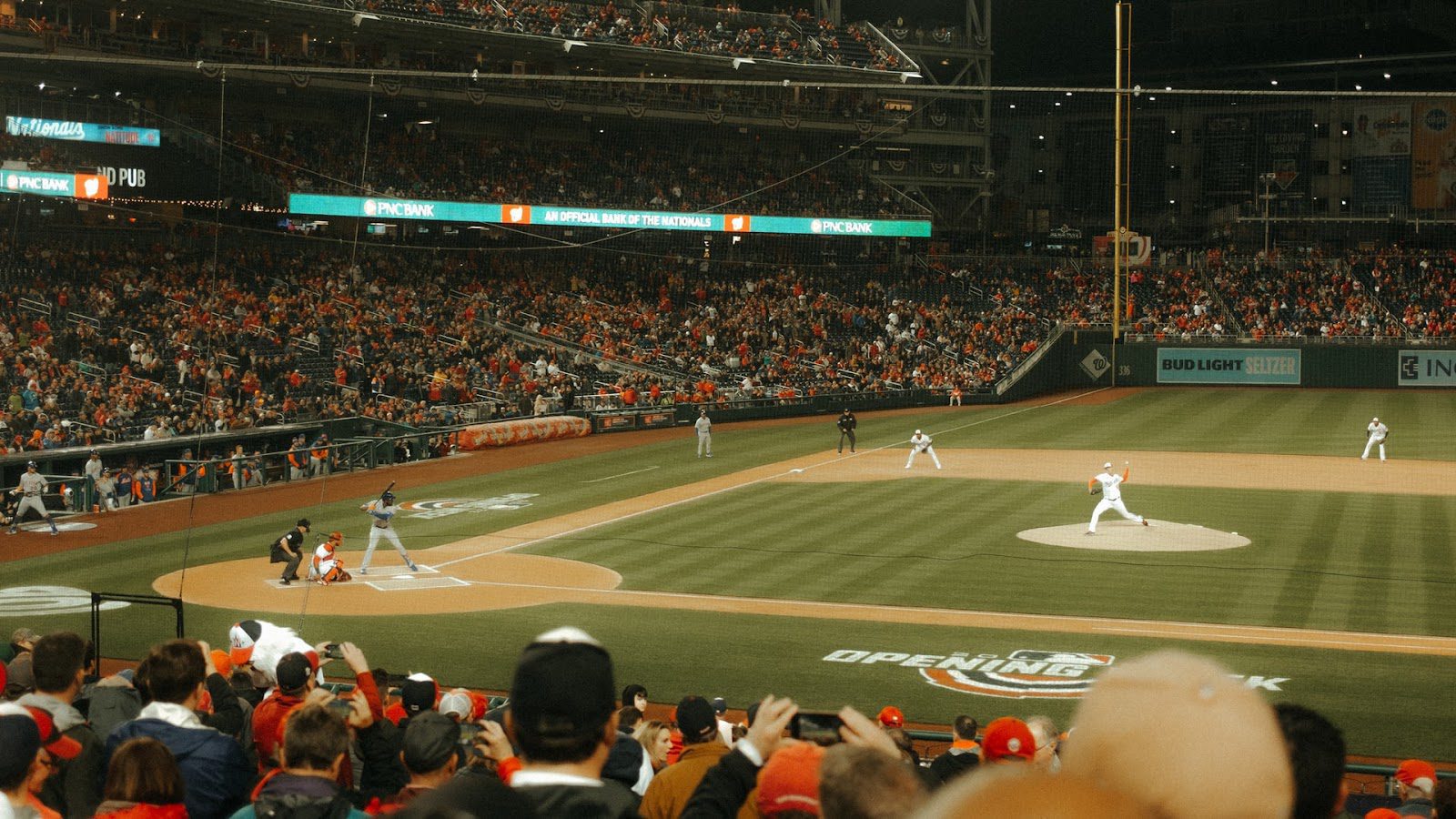
The Nationals have instituted numerous sustainability projects inside the stadium. They are participating in the “Recycle like a Champion Campaign” to encourage recycling. The Park’s playing field has been recycled, creating more than 670 tons of usable topsoil. Some of the stadium’s outdoor furniture was constructed from recycled milk jugs, and the team’s logistics staff members wear uniforms made from totally recycled materials.
Nationals Park’s single-stream recycling program diverts over 75% of its waste from landfills.
Starting in the 2019 season, the stadium not only eliminated single-use plastic straws but began utilizing compostable food service ware (plates, cups, cutlery, trays, and straws). Special compost bins were added to the trash cans and recycling bins already located throughout the stadium. Furthermore, concession giveaways either will be recyclable (soft drink bottles, beer cans, etc.) or sold as reusable souvenirs.When Nationals Park hosted the 2018 All-Star Game, it partnered with Recycle Track Systems (RTS) to properly recycle 22,000 pounds of e-waste before the All-Star festivities. Along with getting the e-waste job done in time, the stadium received a Certificate of Recycling to prove it was EPA compliant. This type of extra effort symbolizes Nationals Park commitment to sustainability. The 2018 MLB All-Star Game was the first American pro sports league event that the Council of Responsible Sport certified as environmentally responsible.

